
By Elizabeth Clark-Stern
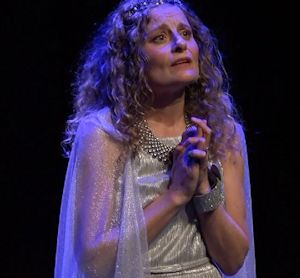
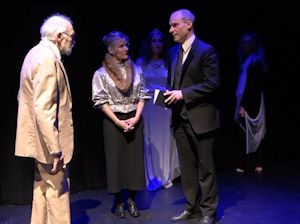
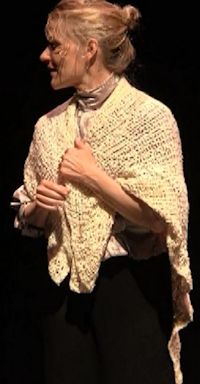
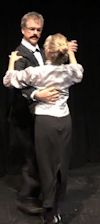
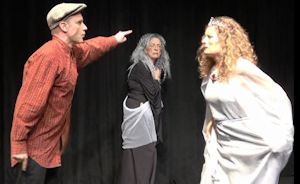
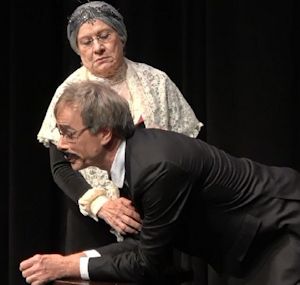
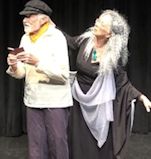
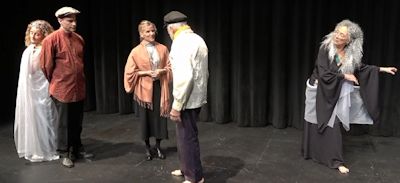
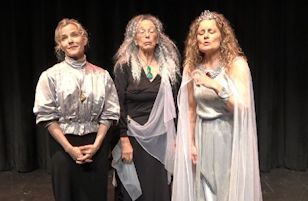
Directed by the
author, with copious contributions from the ensemble.
Sound operation by Donna Lee. Sound recording by Brent
Robinett.
Lighting by John Stern.
Assistant to the Director Dylan Hansen.
Box Office: Diane Bogue, Bunny Brown, Jane Johnston, Barb
Morgan.
Music by Dimitri Shostakovich, Sergei Prokofiev, and Ludwig
Beethoven
Cast In Order Of Appearance
Sigmund Freud. . . . . . . . . . . . .
. . . . Robert Bergman
Lou Andreas Salome. . . . . . . . . . . . .Lindsay Rosen
Salome, of the first century. . . . . . . . Karlie
Markendorf
Sophia, Divine Wisdom. . . . . . . . . . .Elizabeth
Clark-Stern
Frederick Nietzsche. . . . . . . . . . . . . .Tim Nelson
Elizabeth Nietzsche . . . . . . . . . . . . . .Ann Blake
Rainer Maria Rilke. . . . . . . . . . . . . . . Kevin
Filocamo
Leo Tolstoy. . . . . . . . . . . . . . . . . . . . . Robert
Bergman
(Freud and Tolstoy
are both portrayed by Robert Bergman)
Time:
Flows from 1910 to the non-temporal Underworld to the 1880s
to 1926
Settings:
Freud's consulting room in Vienna, Austria (multiple scenes
take place here)
A valley across from Sisyphus's hill in the Underworld
Nietzsche's apartment in Rome (two scenes take place here)
Lou's unconscious mind (multiple scenes take place here)
Street outside Lou's home in Munich
Yasnaya Polyana, Tolstoy's estate in Russia
Street outside a theater in Munich
Rilke's home in Munich
Playwright's Note:
Song of Salome takes place in two dimensions of
reality: the temporal material everyday world, and the world
of dreams, fantasies and visions that live in the
unconscious mind. In the outer world, Lou was
unconventional, brainy, the youngest and only girl in a
family of six brothers. She was close to her father, a
German diplomat who worked in St. Petersburg. Hence, though
German, Lou was born and grew up in Czarist Russia in the
late 1880s. Her confidence and intellectual curiosity led
her to write many books, from Henrik Ibsen's Female
Characters, to novels, to critical essays on the nature
of Christianity and on the ideas of Fredrick Nietzsche. She
crafted formidable relationships with Nietzsche, Rainer
Maria Rilke, Sigmund Freud, and others.
As for Lou's inner life, I, as playwright, made the leap of
inhabiting her inner landscape with feminine Archetypes
symbolizing the Divine Feminine (Sophia) and the Dark
Feminine (First Century Salome, who danced the burlesque
Seven Veils to win the head of John the Baptist.
My inspiration emerged from Bev Osband's workshop on Jung's
Answer to Job. Jung's construct of Job in dialogue with
God and the Devil, while engaging, seemed to leave out the
energy of the Feminine. Lindsey Rosen mentioned Lou Salome,
and out of this I envisioned combining a biographical play
that included a Feminine aspect of Darkness and Light. We
ask the audience to journey with us through the serpentine
structure of the play -- scenes of Lou's outer life followed
by scenes inside her mind. I don't know the precise form of
the real Lou Salome's inner characters, but we all have our
demons and our better angels. May Lou's inner Sophia
and her inner first contury Salome serve as symbols
for the ancient conflict that lives within us all . . . and
does Salome of the Seven Veils have her own story to live
out across the centuries? What does this say about the
Archetypes we "house," and the greater identity, the greater
consciousness we are nestled within?
-----------------------------------------------------------------------------------------------------------------